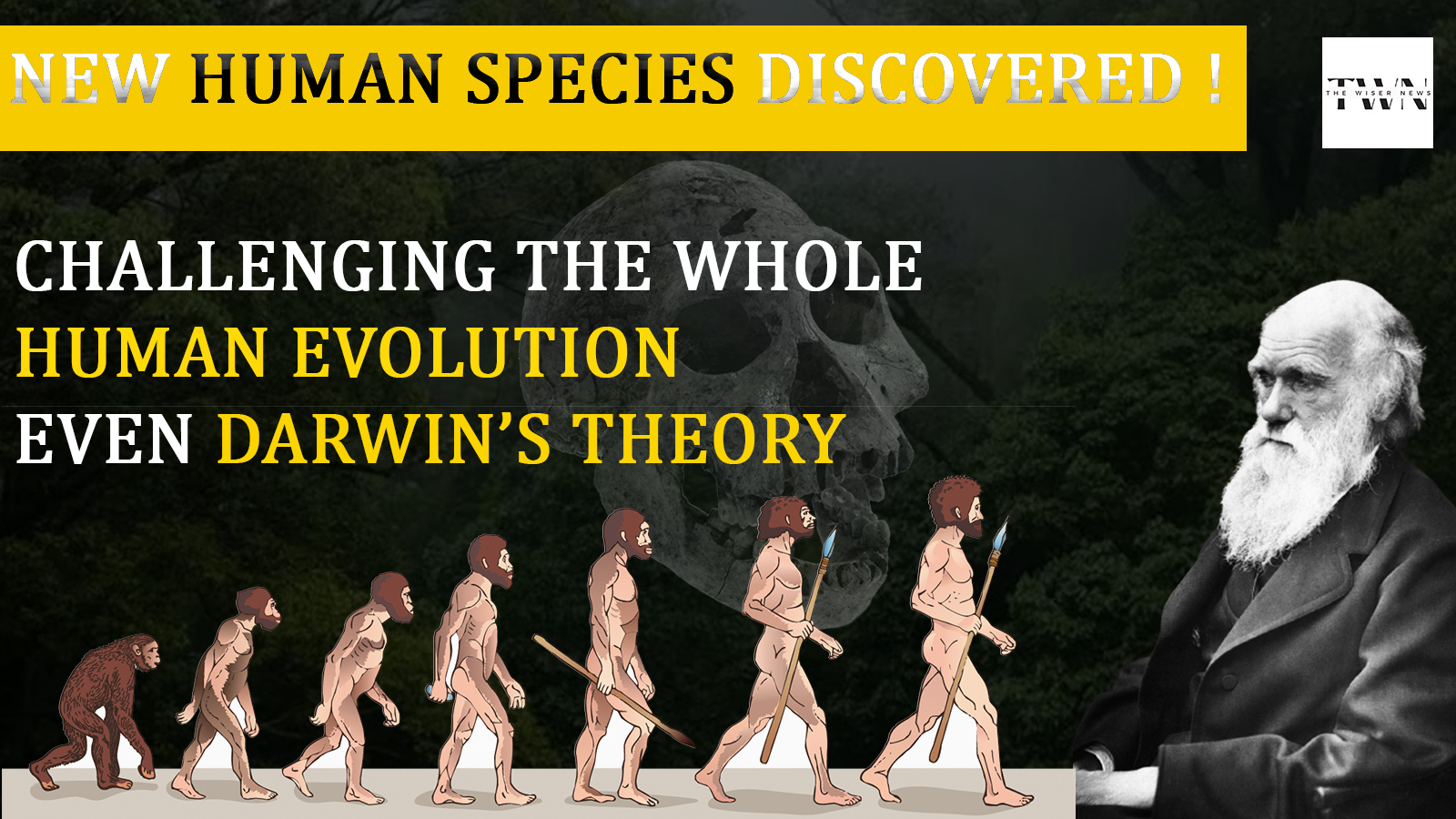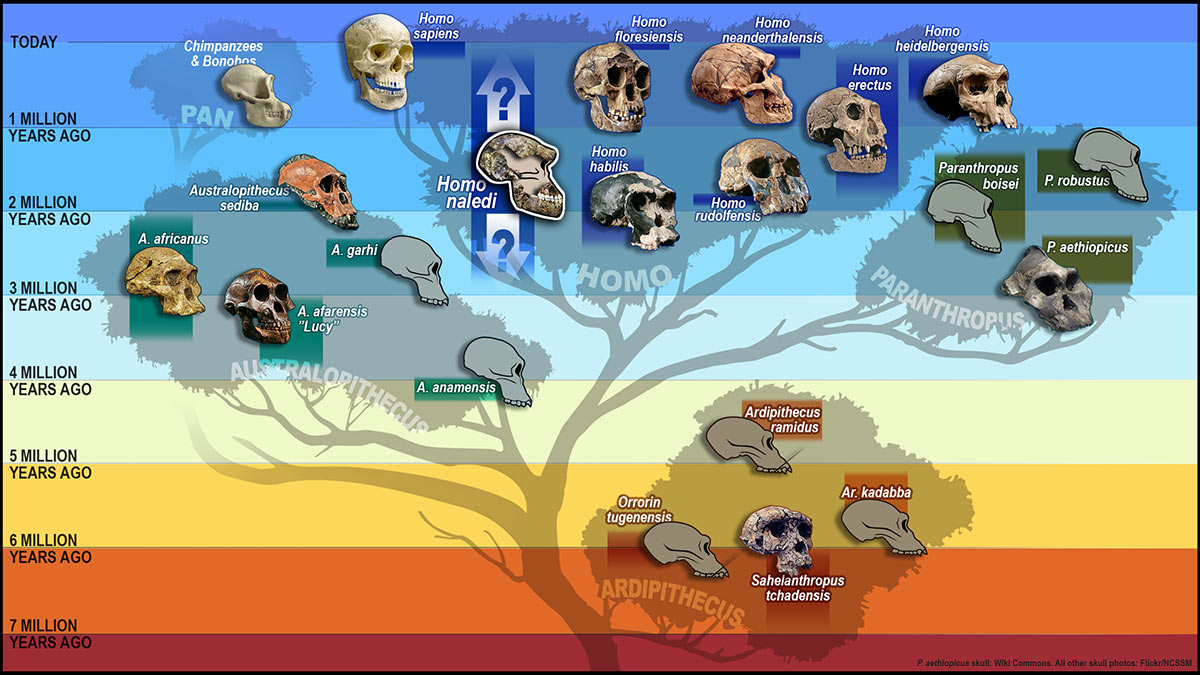Unearthing Enigma: A Challenge to the Chronicles of Human History

The complicated network of human evolution weaves a story of innumerable animals that have contributed to our journey from prehistory to the present. The farther we look into our species' evolutionary timeline, the more these mysteries confound our comprehension.
Recently, scientists made a groundbreaking discovery - a human skeleton that appears to belong to a previously unknown human species. This revelation promises not only to reshape our comprehension of human evolution but also to raise thought-provoking questions that challenge established theories.
Around seven million years ago, during the Miocene epoch, Earth was undergoing significant geological changes, transitioning from a warmer climate to the onset of an ice age. This shift led to a decline in the number of trees, particularly in parts of Africa, a pivotal development in our evolutionary journey.
Our primate ancestors once swung from tree to tree, relying heavily on their unique adaptations for a life in the canopy. However, as the trees dwindled, they found themselves descending to the ground. This transition posed initial challenges, given their bodies were finely tuned for tree-dwelling.
Over time, these primates adapted to life on the ground. Walking upright became a crucial evolutionary step. Their bodies underwent gradual changes, including straightening of the spine, as they evolved into Sahelanthropus, one of the earliest and most significant hominins.

The process of human evolution continued, branching from one species to another. Approximately a million years later, Sahelanthropus gave rise to Homo erectus, a pivotal species in our evolutionary history. Homo erectus is often considered one of the most enduring human species, serving as the common ancestor for many subsequent human lineages, including Homo heidelbergensis and Homo sapiens.
This narrative of our evolutionary history remained relatively unchallenged until a groundbreaking discovery in 2019 in Hualongdong, East China. A fossilized skull and leg bone, dating back three hundred thousand years, were unearthed. At first glance, it appeared to be a normal juvenile, aged twelve or thirteen. However, when the research findings were published on July 31, 2023, it became evident that this skull differed markedly from known human species.
The skull, named HLD 6, baffled scientists. While it shares some characteristics with Homo erectus, the rest of its skeletal structure tells a different story. It appears to be a blend of modern human and unidentified ancient human species. The fact that one individual exhibits features from two distinct periods in human evolution is perplexing.
Xiujie Wu, a prominent paleontologist from the Chinese Academy of Sciences, commented that the skull seems to combine elements from Homo erectus and modern humans, including a recessed chin, which is unlike any established human species. This structure aligns more with the Denisovans, a distinct human species that existed for millions of years in Siberia and Southeast Asia. The presence of Denisovan-like features in a skull that predates their known arrival in Southeast Asia challenges our understanding of human migration and evolution.

One possibility emerging from this discovery is that multiple human species thrived in South Asia throughout history, influencing the region's culture and development. Exploring the existence and impact of these mysterious species becomes essential in filling the gaps in our knowledge of human history.
This is not the first time that our understanding of Homo sapiens has been challenged. In 2017, a human fossil in Morocco exhibited characteristics of Homo sapiens. This finding raises doubts about the timeline of human evolution, especially when and how Homo sapiens first emerged. Similar questions arose when a modern human skull was discovered in Israel in 2019, indicating an early presence of Homo sapiens outside Africa.
These recent discoveries underscore the need to revise our understanding of human evolution. While our textbooks often present a neat narrative of our evolutionary origins, the reality is far more complex. As we piece together the puzzle of our history, it becomes apparent that our ancestors may not be those we once thought. The possibilities in this uncharted territory are boundless, reminding us that the evolution of our species remains a captivating enigma.
The journey of human evolution is far from over, and with each discovery, we inch closer to a more comprehensive understanding of our complex past. As we delve deeper into the mysteries of our own history, the enigma of our origins continues to challenge our perspectives and stimulate our curiosity.
With each unearthed fossil and every piece of the puzzle, we move one step closer to unraveling the captivating story of our species, a narrative rich with complexity and surprises. Human evolution remains an enduring enigma, beckoning us to explore the profound mysteries that define our shared heritage.
YOU MAY ALSO LIKE THIS
Robbers Loot Jewelry Shop in Mahottari; Traders Shut Down Market Deman..
Janakpurdham , March 17, 2025 : Traders in Mahottari have launched protests after a group of robbers looted a jewe..
6 Month Ago
Trump and Putin to Discuss Ukraine on Tuesday
Washington,March 17, 2025 – U.S. President Donald Trump has announced plans to speak with his Russian counterpart,..
6 Month Ago
One Injured in Police Firing at Bhathihan, Dhanusha
Dhanusha, March 17 – A clash erupted once again on Monday in Bhathihan, located in Sabaila Municipality, Dhanusha, over the ..
6 Month Ago





